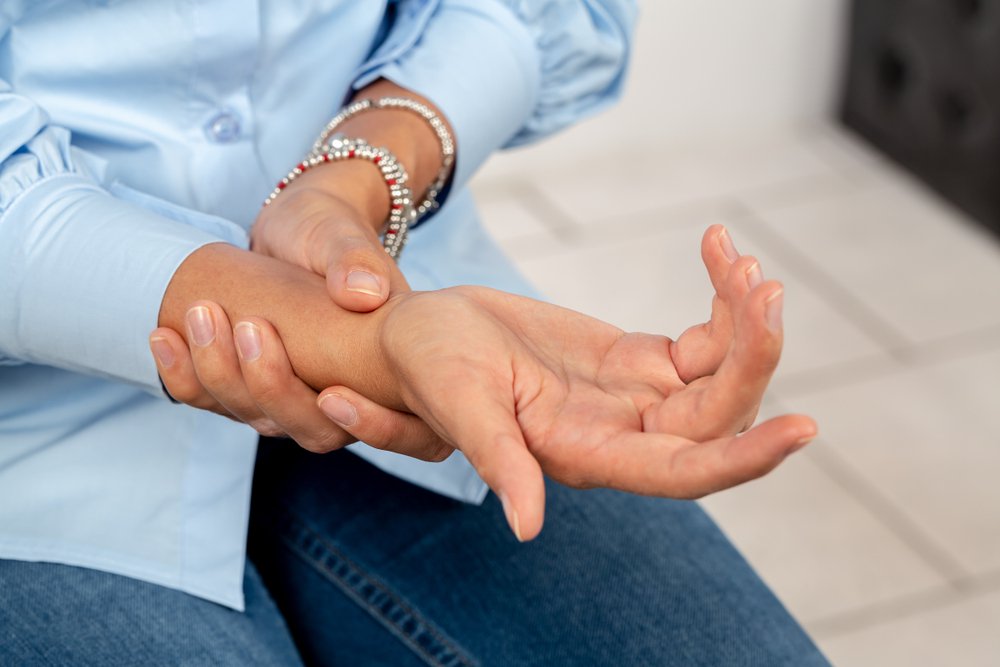 March 4th is Employee Appreciation Day, and we’d like to celebrate workers everywhere for the time and dedication they place in their jobs. One of the most important ways to show employee appreciation is to support the health of workers – to do this, we’d like to discuss some of the risks workers face to their hands and wrists on the job and provide some tips for preventing these injuries from happening in the future.
March 4th is Employee Appreciation Day, and we’d like to celebrate workers everywhere for the time and dedication they place in their jobs. One of the most important ways to show employee appreciation is to support the health of workers – to do this, we’d like to discuss some of the risks workers face to their hands and wrists on the job and provide some tips for preventing these injuries from happening in the future.
At OAA Orthopedic Specialists, our fellowship-trained, board-certified upper extremity specialists work together with our work injury department to help patients return safely to work following a hand or wrist injury.
Here are four of the most common upper extremity work injuries, and some essential prevention techniques to incorporate into your workday:
1. Carpal Tunnel Syndrome
Carpal tunnel syndrome occurs as a result of a compressed median nerve, which runs the length of your forearm and controls the movement of your fingers. How does this compression happen? Usually, it’s due to swelling of the “carpal tunnel:” a series of muscles that encircle the median nerve inside of the wrist.
Many workers are susceptible to developing carpal tunnel syndrome because of the repetitive or excessive nature of the way they move their fingers, hands, and wrists throughout the day. If you’re experiencing pain or numbness in your wrist and hands on a regular basis, you may be struggling with carpal tunnel syndrome.
Some tips to prevent carpal tunnel syndrome in your work environment include:
- Stretching and strengthening your hands and wrists throughout the day using targeted exercises
- Implementing improved ergonomics into your workstation
- Loosening your grip or using less force as you grip
- Keeping your wrists in natural positions, not bending them
- Taking breaks throughout the day
- Putting your wrist in different positions throughout the day
- Wear a supportive wrist brace if necessary
2. Trigger Finger
Trigger finger” – clinically known as stenosing tenosynovitis – is an irritating and painful condition that can prevent you from fully extending one or more of your fingers. Our fingers are made of multiple tendons that are all covered by “synovium,” which are individual sheaths designed to protect the tissue inside.
Additionally, synovium produce a substance called synovial fluid, which lubricates the sheath and allows your finger to move flexibly and quickly. In a case of stenosing tenosynovitis, a minor tendon injury can limit the ability of the synovium to produce that fluid, causing inflammation and preventing you from extending your finger.
Because most cases of workplace trigger finger occur due to overuse, prevention should be focused on:
- Always using appropriate tools for tasks that involve the hands and fingers
- Taking plenty of breaks to rest your hands and fingers
- Avoiding overuse of the wrist and fingers whenever possible
3. Cubital Tunnel Syndrome
Like carpal tunnel syndrome, cubital tunnel syndrome occurs due to a compressed nerve in the arm. However, in the case of cubital tunnel syndrome, the affected nerve is the ulnar nerve, which runs from your neck through your arm and down to your hand and wrist.
Because this nerve is located close to the elbow, cubital tunnel syndrome is often the result of irritated, inflamed tissues in the elbow. In the workplace, this can happen due to overuse of vibrating or pulsing tools, or frequently using the elbows to support the rest of the body.
To prevent cubital tunnel syndrome at work, it’s important to:
- Maintain strength and flexibility in your arms
- Practice warm-ups and stretches before repetitive arm movements
- Avoid resting your elbows on hard surfaces
- Take breaks when using vibrating machinery
4. Tendonitis
The strength and flexibility of your hands and wrists are in no small part due to a number of tendons hard at work throughout your upper extremities. When these muscle groups become overused in the workplace, they become vulnerable to inflammation, which can cause symptoms of weakness and pain.
The condition associated with these symptoms is known as tendonitis, and it can happen anywhere tendons are found in your upper extremities, from your wrists to your fingers and beyond.
In order to prevent tendonitis before it occurs, try to:
- Utilize proper techniques when performing physical tasks at work
- Change up your routine or position to avoid overusing the same muscle groups
- Have a gentler grip and go easier on your muscles in general
- Use appropriate posture when performing tasks
- Stop your task immediately if you notice any pain
While these prevention tips may be able to stop hand and wrist injuries from occurring at work, accidents happen, or you may already be experiencing symptoms of these aforementioned conditions. At OAA, our board-certified, fellowship-trained hand and upper extremity specialists can help you receive the treatment you need. Additionally, our Work Injury Center is dedicated to helping patients navigate the world of workers’ compensation and feel confident when returning to the workplace.
If you’re ready to start living life without hand or wrist pain, schedule your appointment with OAA today or call (610) 973-6200 for more information.
Frequently Asked Question
What is the difference between wrist sprains and wrist fractures, and how to relieve them?
A wrist sprain refers to an injury to the ligaments in the wrist, while wrist fractures involve a break in one of the bones. Both can cause pain and limit wrist motion. To relieve pain from either condition, it is important to rest and immobilize the affected area, apply ice, and seek medical attention if necessary.
How do wrist injuries occur in the workplace?
Wrist injuries can happen at work due to repetitive motions, overuse of the hands and fingers, or accidents such as falls or direct impacts. Taking breaks, using proper techniques and equipment, and maintaining wrist strength and flexibility can help prevent these injuries.
Can wearing wrist guards prevent hand and wrist injuries?
Wearing supportive wrist guards can help protect against injuries, such as sprains and fractures, by providing extra support and cushioning to the wrist. However, they may not prevent all types of injuries, so it is important to also use safe practices in the workplace and take breaks when needed.
Is it possible to have hand and wrist injuries from soft tissue damage?
Yes, soft tissue injuries such as tendonitis or trigger fingers can cause pain and discomfort in the hands and wrists. These conditions can occur due to overuse or repetitive motions at work. Seeking medical attention and following proper preventive measures can help manage these injuries.

